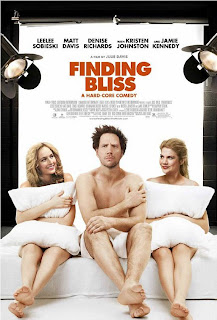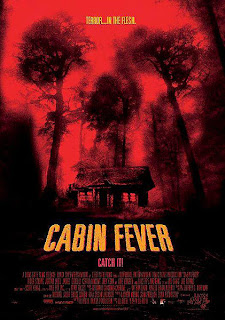It's 'Doctor' to You: "Doctor Strange" origin story digresses from MCU with eye-popping fun
Doctor Strange (2016)
115 min., rated PG-13.
Like Tony Stark, Dr. Stephen Strange is a wealthy, arrogant jerk turned superhero, but that’s pretty much where the similarities end. Being the 14th film (and counting) in the Marvel Cinematic Universe™, “Doctor Strange” is strange enough in that it feels like no other entry residing in that universe. In terms of comparison, it’s decidedly more “The Matrix,” “Harry Potter,” and “Inception” than “Guardians of the Galaxy,” “Ant-Man,” or “Deadpool.” With the giant comic-book brand taking its first turn into mysticism and psychedelia for the second part of Phase Three, writer-director Scott Derrickson (2012’s “Deliver Us from Evil”) and screenwriters Jon Spaihts (2012’s “Prometheus”) and C. Robert Cargill (2012’s “Sinister”) charge this refreshing digression with plenty of razzle-dazzle and a good deal of fun. If “Doctor Strange” doesn’t completely break out of the formula Marvel loves so much, it is still an entertaining, visually arresting introduction with some of the most eye-popping effects this universe has seen.
The esteemed Dr. Stephen Strange (Benedict Cumberbatch) is a brilliant and arrogant neurosurgeon, until a car accident on a winding road changes brings him down a peg. He suffers from severe nerve damage that demands a procedure on his precious hands. Broken and furious that his work will never be the same without his most important instrument, Strange gets pointed in the right direction by a patient (Benjamin Bratt) and heads East to a secret compound called Kamar-Taj in Nepal. There, he meets the Ancient One (Tilda Swinton), a healing sorcerer who can help his body repair itself through spiritual belief and the mystic arts. Once the self-centered doctor finally learns how to use his powers, Strange is tasked to protect the dimension from mystic threats, like former Kamar-Taj pupil Kaecilius (Mads Mikkelsen) who has taken to the dark arts and wants eternal life for himself. Was Mister—no, Doctor!—Strange born for the mystic arts?
As the entry rule goes, there has to be an origin story before new superheroes join the MCU. “Doctor Strange” is just that, however, the other ones don’t have astral-projection and time-looping. The cheeky side of Marvel is still intact—Dr. Strange is able to rattle off his knowledge of pop singers in one scene—and director Scott Derrickson’s horror sensibilities come out, particularly the first time Dr. Strange falls through other dimensions, along with the creepily hallucinatory image of little hands growing out of Strange’s hands. It’s trippy, kaleidoscopic, and just flat-out cool to look at. There are other nifty humdingers, like a neatly staged astral-body fight that breaks out in a hospital room where surgeon Christine Palmer (Rachel McAdams) tries to resuscitate Strange’s physical body, recalling Peter Jackson’s “The Frighteners,” and every show-stealing moment with the doctor’s Cloak of Levitation.
Without any familiarity of the Doctor Strange of the comics, it’s hard to speak on the casting of Benedict Cumberbatch. However, on screen where it really matters, he feels like the right choice and hits all the proper notes, utilizing his dry wit and innate intelligence to curb his prickishness. Prior to Strange becoming the Sorcerer Supreme, the script rather efficiently allows Cumberbatch to set up the character’s lifestyle and his inflated ego. Instantly canceling out any criticism for the gender-swapping and whitewashing of the role of an elderly Asian man, Tilda Swinton pays off as The Ancient One. She is excellent, bringing forth compassion and a wry sense of humor. As fellow surgeon Christine Palmer, Rachel McAdams doesn’t get to fully escape the constraints of the underdeveloped ex-girlfriend role, a pivotal force in bringing out Strange’s humanity, but she does lend a necessary groundedness and warmth to the fantastical surroundings. Also, McAdams gets to react to Strange’s astral-projection in amusing ways. A humorously deadpan Chiwetel Ejiofor, as sorcerer Mordo, and Benedict Wong, as humorless spellbook keeper Wong, round out the cast. As for the film’s baddie, the most notable trait about villain Kaecilius is that he is played by Mads Mikkelsen, a superb actor acting through dark eyeshadow, but he's giving it his all.
Beyond gratuitous destruction, “Doctor Strange” does not lack imagination. Stupendously conceived, the origami effects are not just shiny, pretty window dressing and do deserve every superlative. The M.C. Escher painting-inspired folding of a cityscape and hallway-spinning are not only dazzling, even if both images owe a debt to Christopher Nolan’s “Inception,” but carry an overwhelming weight that is something often neglected in CGI. The basic mechanics of Dr. Stephen Strange's origin story are familiar, but counting as the most mystical offering in such a universe, “Doctor Strange” solidly introduces a character and a world unto their own. Even if one doesn’t care where this particular character fits into the rest of the franchise, the film proper only has one utterance of the Avengers and an aerial shot of their headquarters. Before Doctor Strange joins the family, this is a satisfying one-off, a grand eye-candy funhouse through time and space.
Grade: B












Comments
Post a Comment